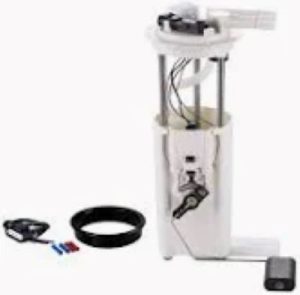If there is an issue with the fuel pump, that means the correct air-fuel ratio is not being met in a vehicle and it can cause countless performance problems as well as increased emissions. A gasoline engine should have an air-fuel mixture of 14.7:1, so for every one part fuel, 14.7 parts air is ideal This balance is vital to ensure proper combustion efficiency. A fuel pump that does not perform its task appropriately will most likely not build adequate fuel pressure leading to the range of 40–60 psi. These pressure drops can then disrupt the critical 14.7:1 air/fuel ratio, making it lean (too much air and not enough fuel).
According to automotive expert John McGuire, “an incorrect balance of the air-fuel mixture can result in less effective combustion, and reduce fuel economy by up to 15 per cent.” LicensedImageFor the sake of argument, let's consider a faulty fuel pump that causes a lean mixture in a 25 mpg vehicle to only get around 21.25 mpg. While the decrease in efficiency certainly impacts performance, it also results in more trips to the pump that translate into higher operational costs.
According to the Environmental Protection Agency (EPA), just a slight variation in the air-fuel ratio will cause carbon emissions to rise by 20% directly resulting into environmental pollution. A vehicle that runs too lean will also create more nitrogen oxides (NOx), a direct contributor to pollution. And the Automotive Research Association report reveals that fuel pump, and by extension air-fuel ratio problems accounted for twenty percent of vehicles diagnosed with an acceleration problem.

In a practical sense, the signs of a failing fuel pump can be found in rough idles, sudden stalling or hesitation when accelerating. One is for fuel pump not being able to deliver fuel in consistent flow. Take a situation where an engine stalls at stoplights: the driver may discover that fuel pressure has dropped too low due to a faulty pump, knocking everything out of sync and disrupting the required air-fuel ratio needed for normal operation.
A diagnostic tool such as OBD-II scanner can help in determining the air-fuel ratio by watching the vehicle’s oxygen sensors and fuel trims. When a bad fuel pump causes lean conditions, the engine control unit (ECU) attempts to compensate by adjusting fuel trims. These compensatory mechanisms become ineffective, hence engine knocking and/or overheating can occur if the fuel pump is unable to sufficiently deliver fuel. Critics such as industry analyst Sarah Thompson notes, “The ability to determine fuel direction is critical in ensuring optimal engine performance.
In Summation, a Fuel Pump that is on the fritz then will result in an Air-Fuel mixture that is not as good as it should be resulting in poor Fuel Efficiency and more Emissions along with possible Engine Damage overtime. Regular maintenance, timely diagnostics and replacements will eliminate these issues to keep vehicles running well. This information helps drivers better diagnose symptoms related to the fuel pump, preventing issues from festering into large problems and saving them both time and money.